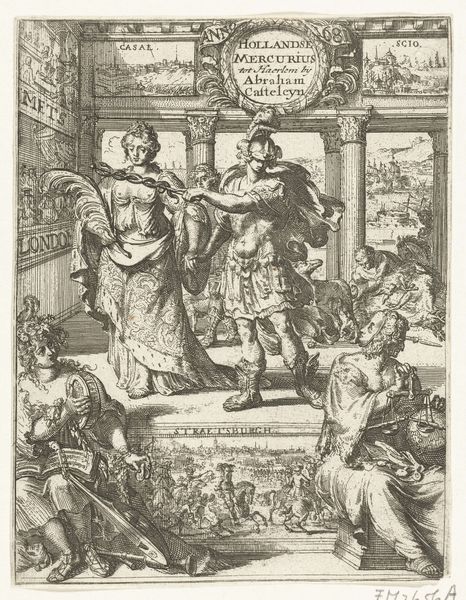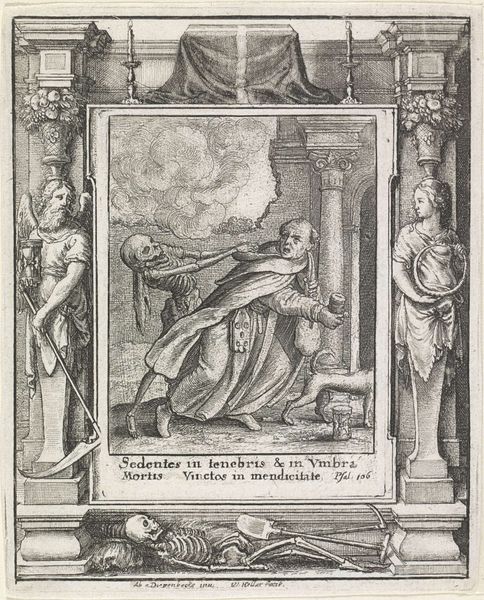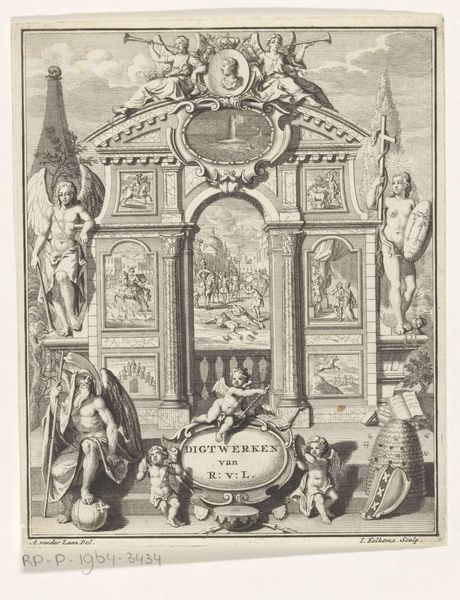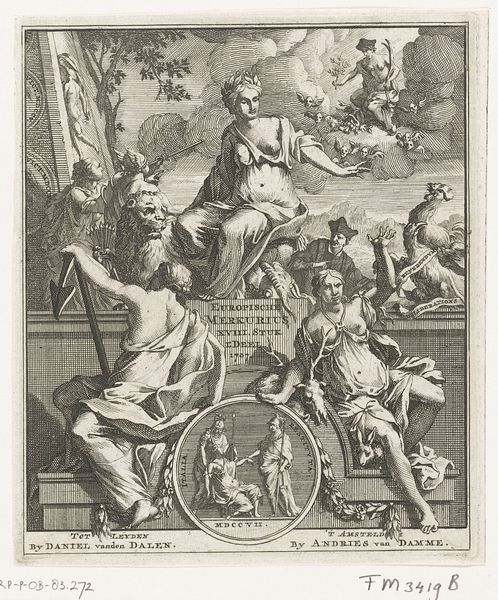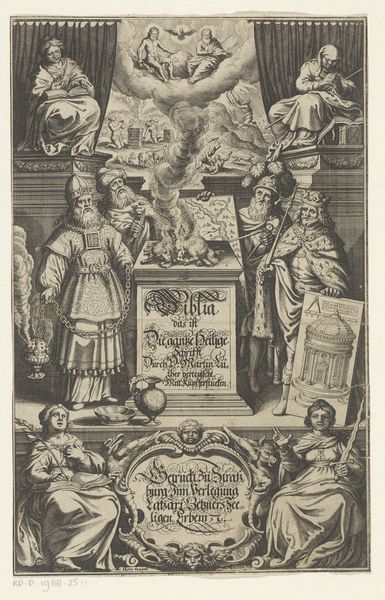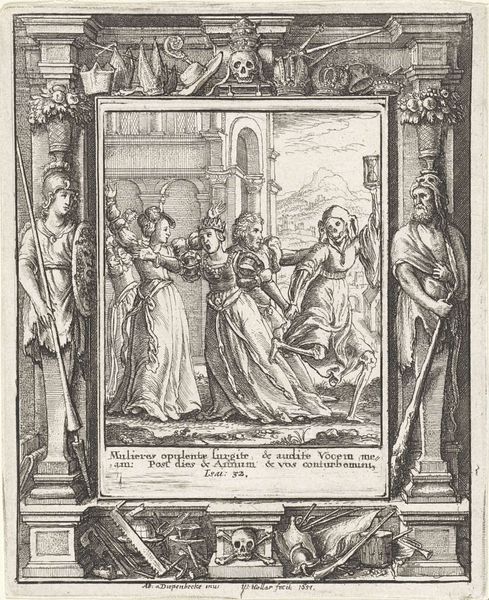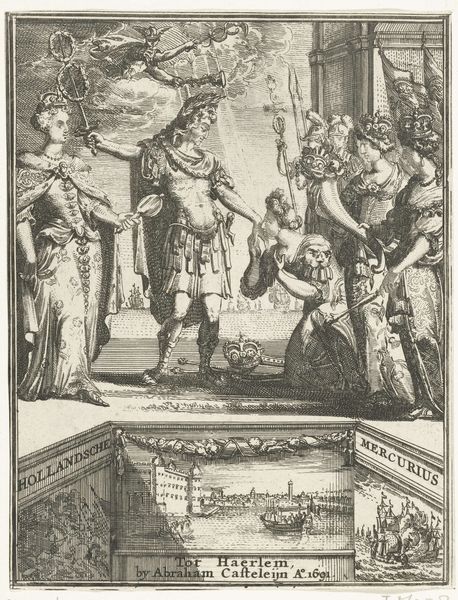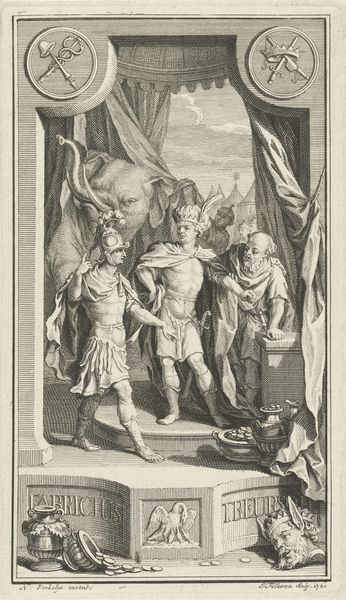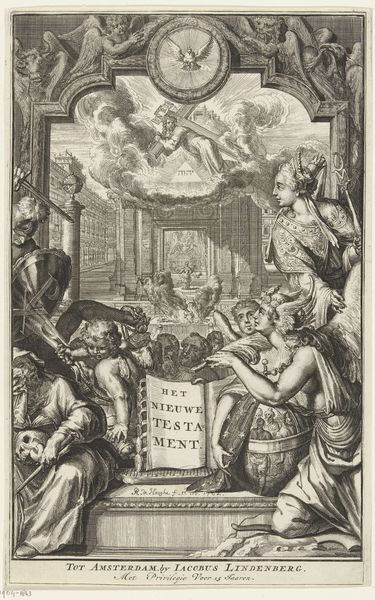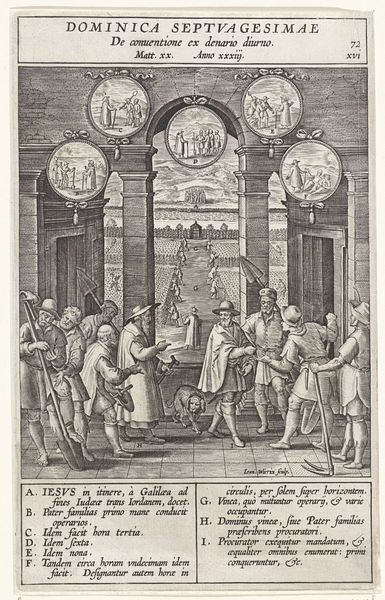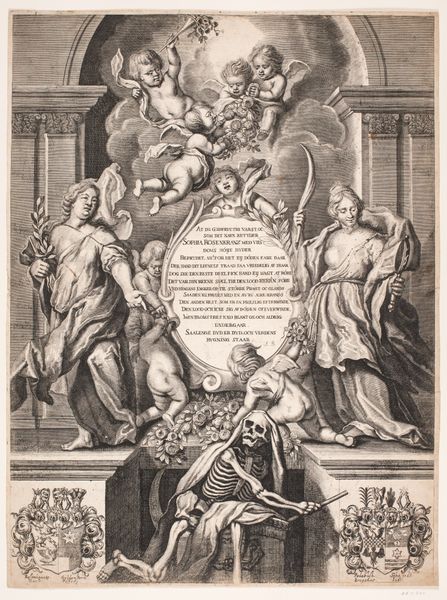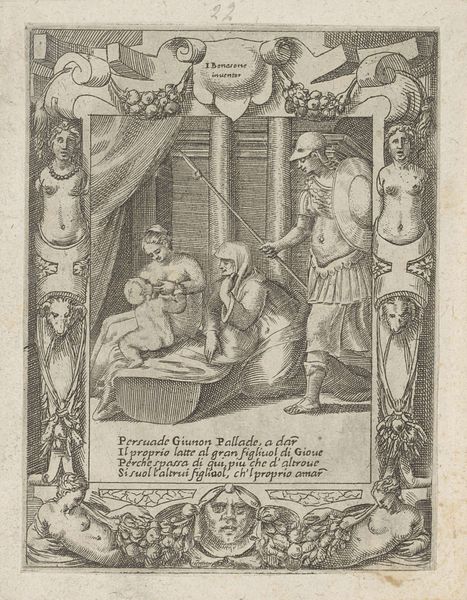
drawing, print, etching, engraving
#
drawing
#
baroque
#
dutch-golden-age
# print
#
etching
#
figuration
#
line
#
cityscape
#
history-painting
#
engraving
Dimensions: height 178 mm, width 132 mm
Copyright: Rijks Museum: Open Domain
Curator: Let’s turn our attention to “Reiziger wordt ontvangen bij stadspoort,” or "Traveler being welcomed at the city gate" crafted by Crispijn van de Passe the Younger around 1652. This Dutch Golden Age print is currently housed here at the Rijksmuseum. Editor: It’s interesting. My first impression is of formal welcome, perhaps slightly theatrical given the allegorical figure overhead. The contrast in textures, especially with the sharp line work in the clothing, is quite appealing. Curator: Precisely. Observe how the composition is structured around a clear division. Two distinct planes and two welcoming committees flank the central equestrian figure who is offered a stemmed vessel by what looks to be officials of the hosting country. Note how this sets up visual dialogues between control and expansion. The two welcoming committies each holding charts seem to be symbols of colonial endeavors on their respective continents. Editor: Ah, good point. The gesture with the chalice – perhaps it’s an offering or acceptance of passage? This simple cup implies ritual. Looking at the background architecture it seems a clear intention that the journey is intended to carry significance. What does the angel and map of "Asia" contribute above? Curator: An allegorical representation which contextualizes both the image and title above as being related to Willem Litgouw's supposed nineteen-year voyage. The Latinate construction serves to position the voyage as both epic in scale and as contributing to the historical perception of foreign continents. The visual structure emphasizes European centrality in viewing and translating far away continents and their stories. Editor: Yes, the mapping adds such cultural weight; like taking possession by charting it. This reminds me of the psychological implications of exploring "unknown" lands. I think many readings are possible here regarding ambition and colonization. Curator: Indeed. The careful linework of van de Passe invites extended consideration of how European identity in the mid-17th century, after the independence of the Dutch Republic, connected both commerce and control through visual means. Editor: It is truly enlightening to see how Crispijn van de Passe used simple lines to capture complex ideas and power dynamics of the era.
Comments
No comments
Be the first to comment and join the conversation on the ultimate creative platform.
